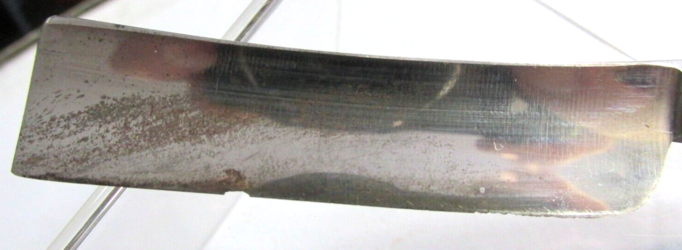I am thinking about using a file and filing off the chip without a bevel, keeping the smile as intact as possible. Then proceeding to the hones with tape on the spine and restoring the bevel with the blade laying flat.
In other words, the file will be perpendicular to the edge and the bevel will not exist any longer after I remove the chip. The edge will be square without a bevel, without an apex.
Then I plan on starting with like 320 grit and working up to a finish edge and bevel (apex). I am thinking about removing the tape on the spine at about 2000 grit and finishing without tape.
I worked on one before and I worked for a long time with the spine and edge flat on the stone. It took a while to hone the chip out.
Any tips or suggestions and am I thinking straight with this? It is a very nice Wade and Butcher 3/4 inch blade and the chip is no deeper than a 1/6th of an inch a bit less. I am looking forward to a good edge when completed.
thanks in advance for the great advice and constructive criticism.
In other words, the file will be perpendicular to the edge and the bevel will not exist any longer after I remove the chip. The edge will be square without a bevel, without an apex.
Then I plan on starting with like 320 grit and working up to a finish edge and bevel (apex). I am thinking about removing the tape on the spine at about 2000 grit and finishing without tape.
I worked on one before and I worked for a long time with the spine and edge flat on the stone. It took a while to hone the chip out.
Any tips or suggestions and am I thinking straight with this? It is a very nice Wade and Butcher 3/4 inch blade and the chip is no deeper than a 1/6th of an inch a bit less. I am looking forward to a good edge when completed.
thanks in advance for the great advice and constructive criticism.




